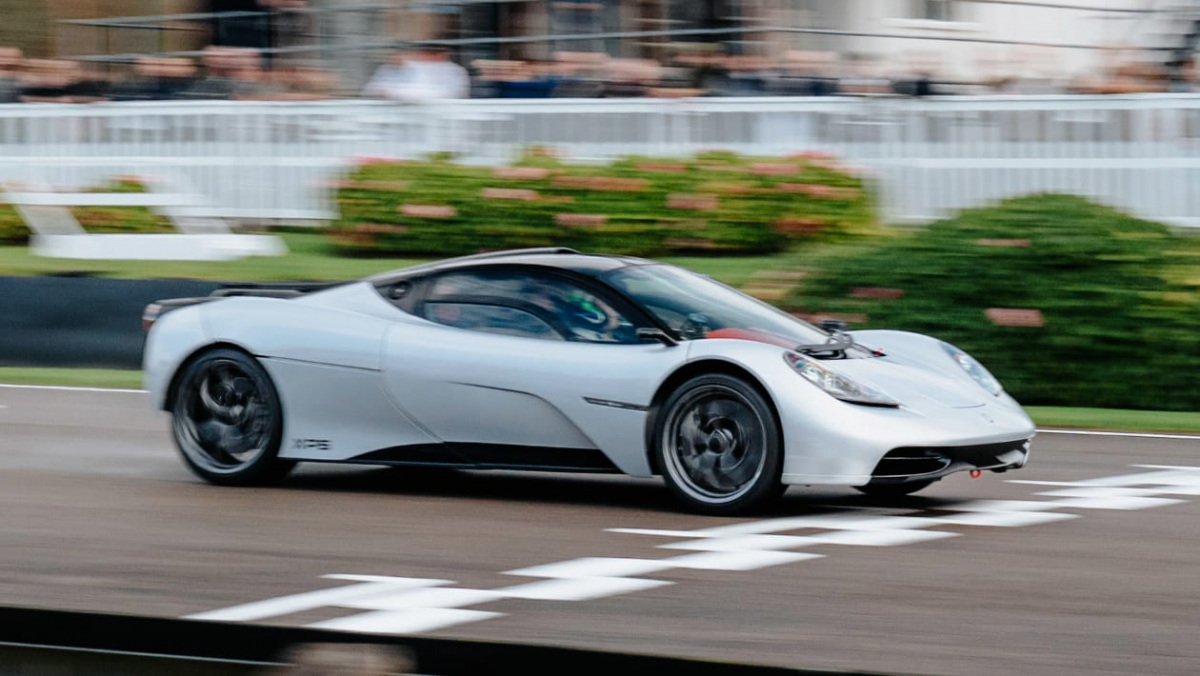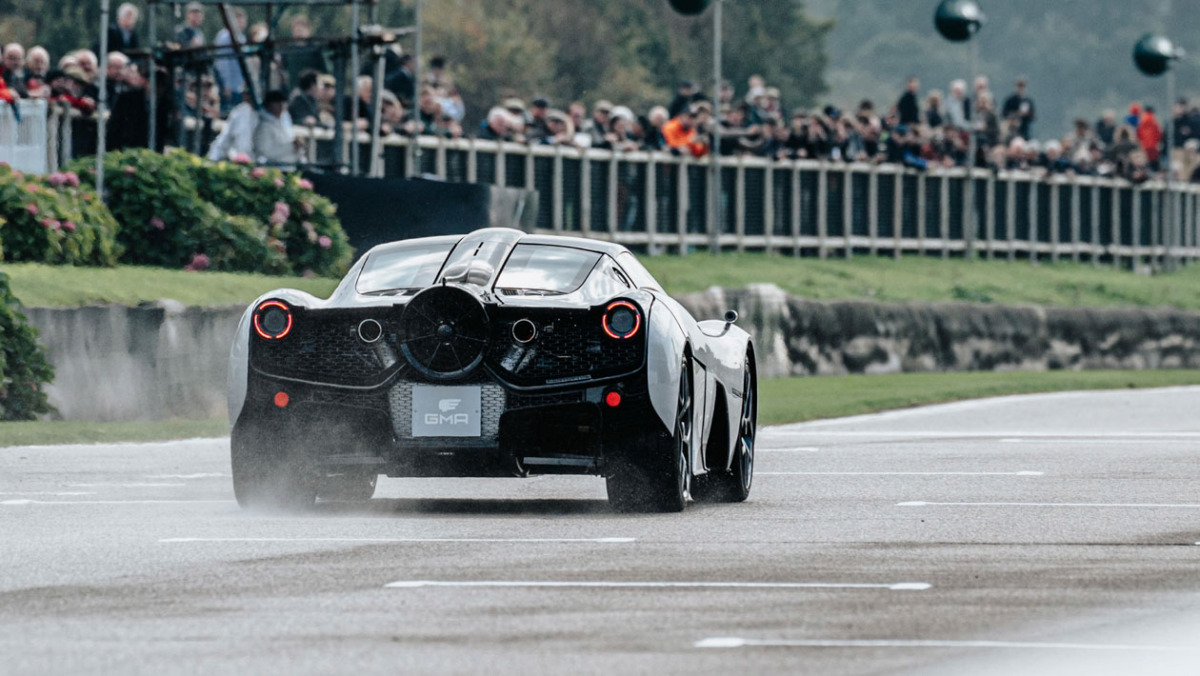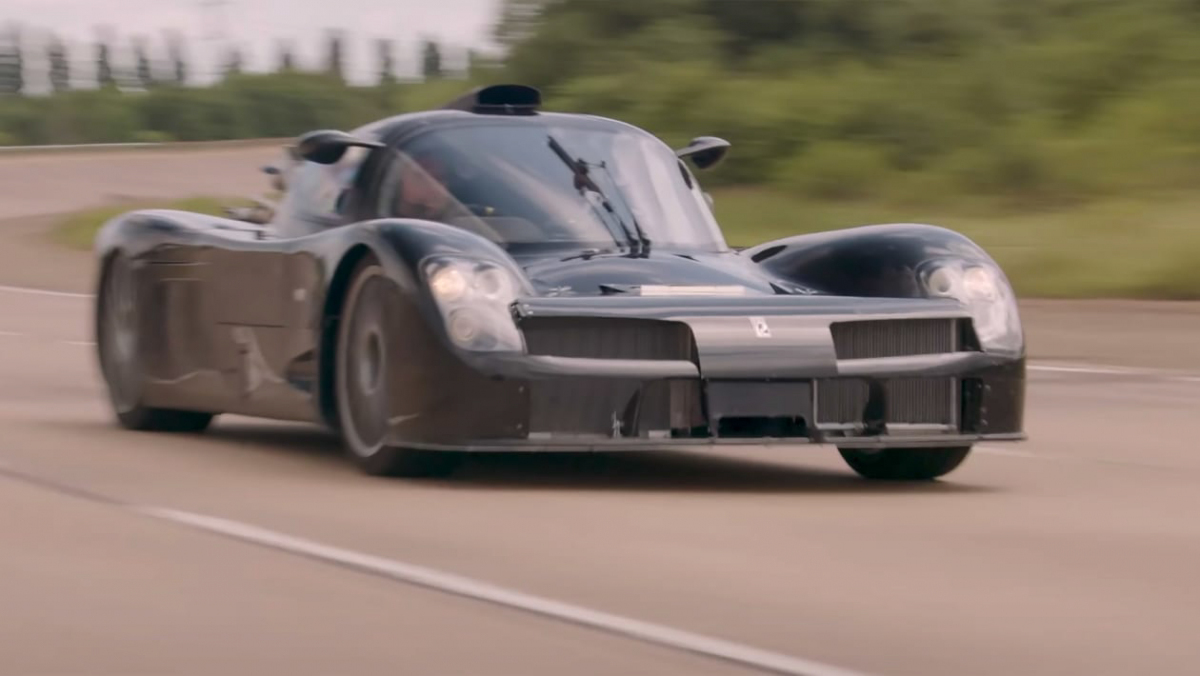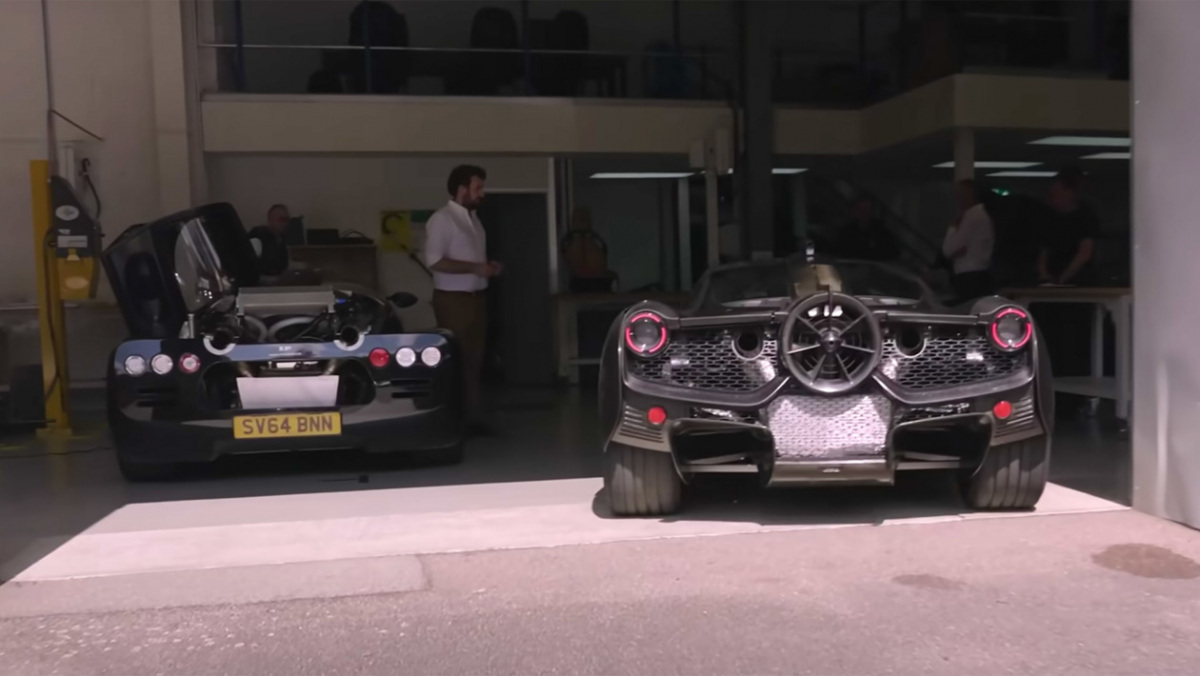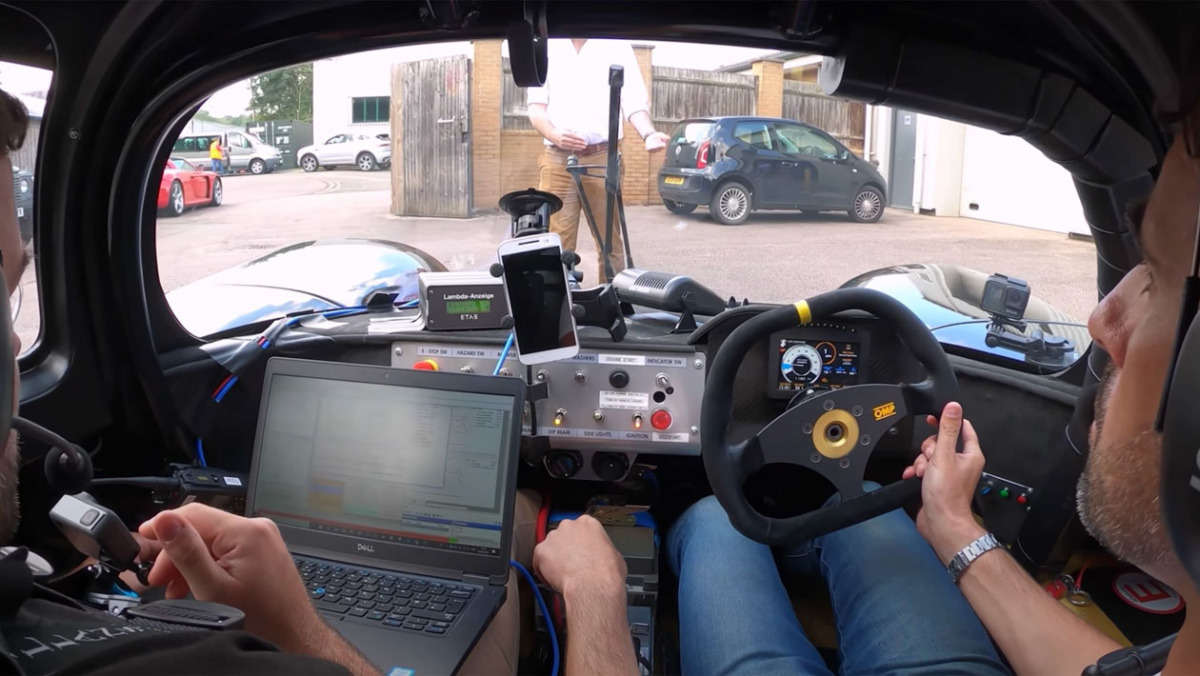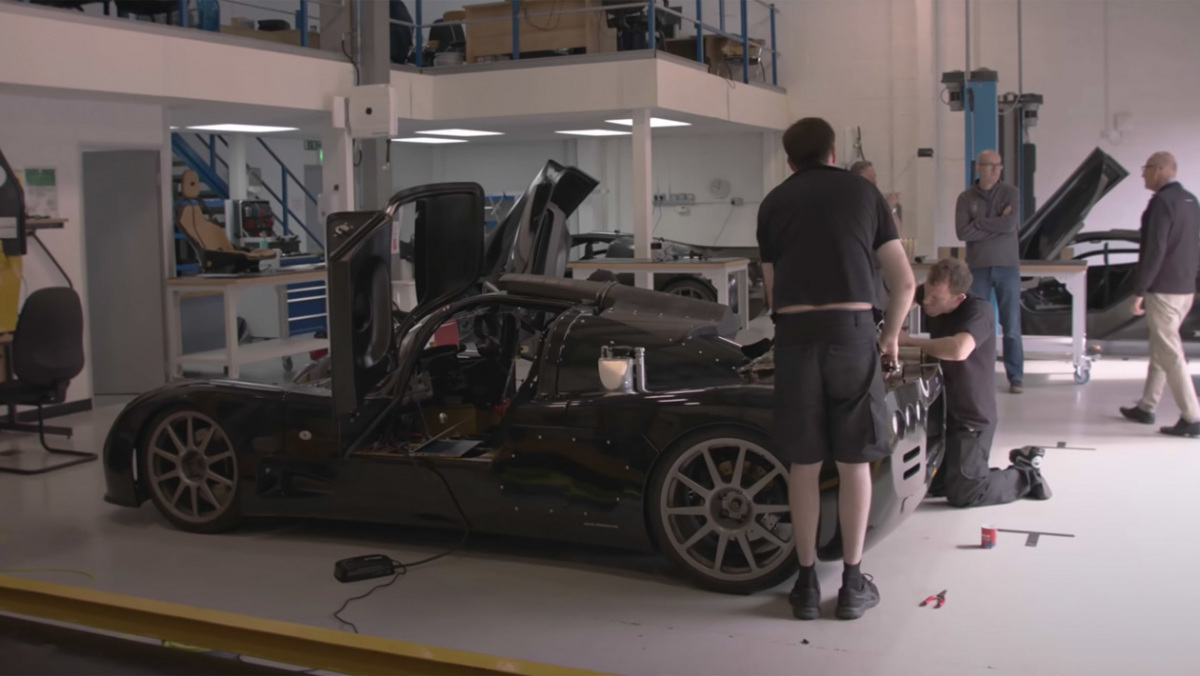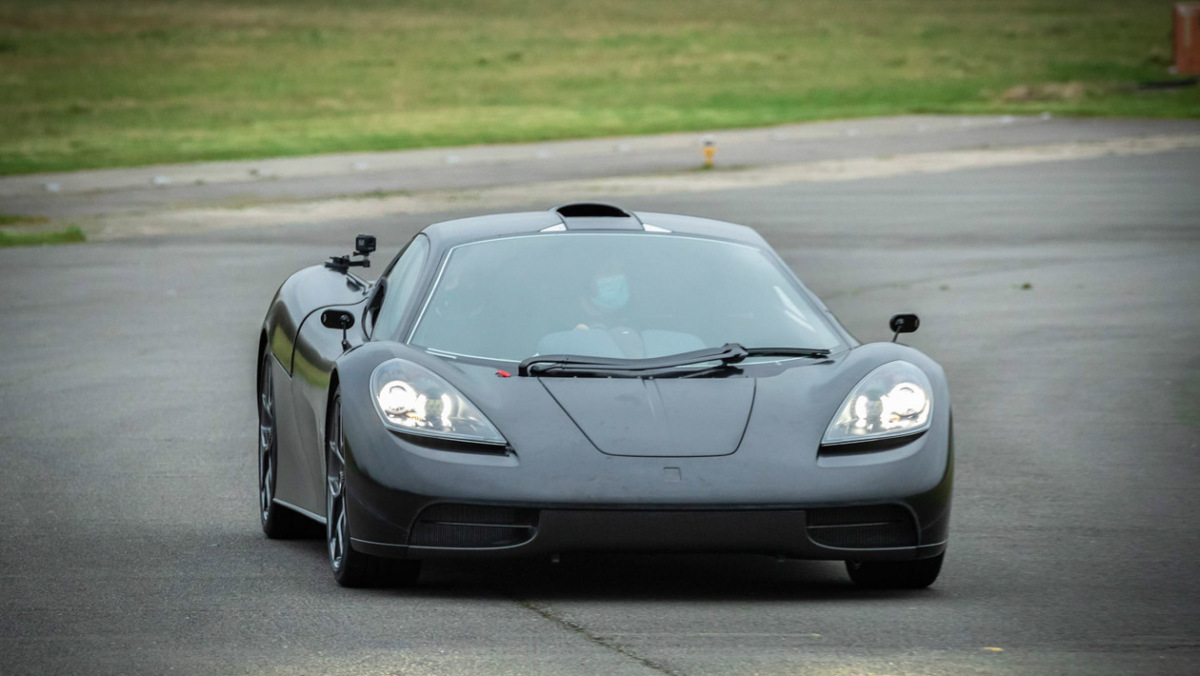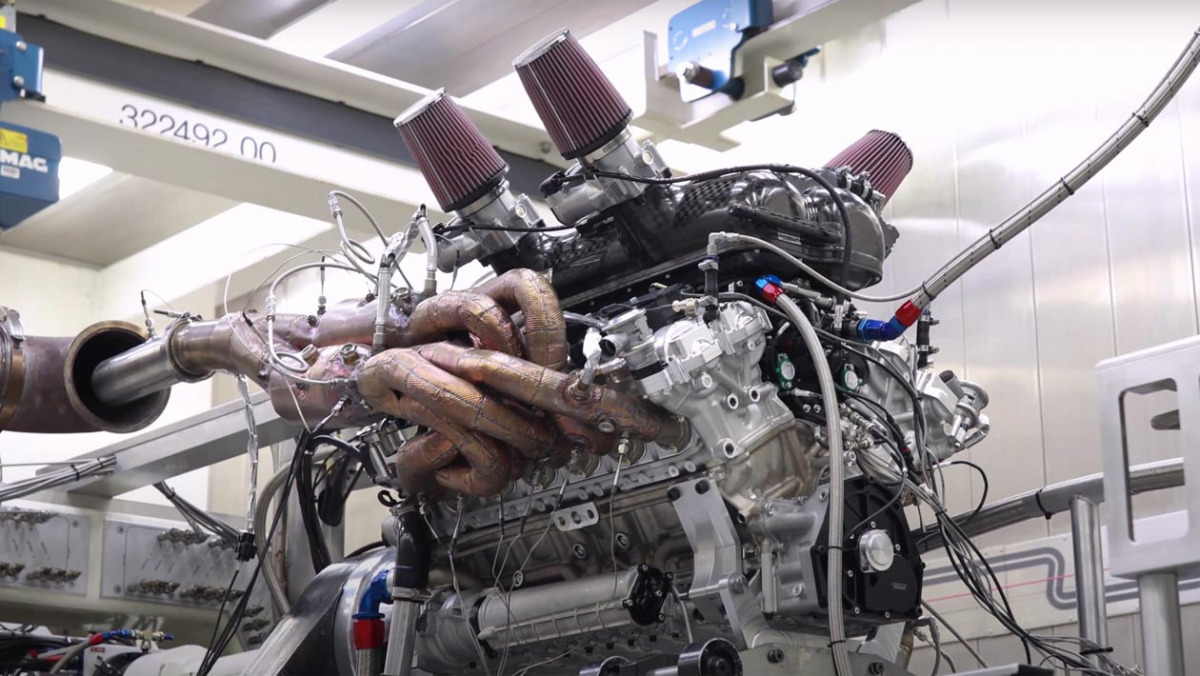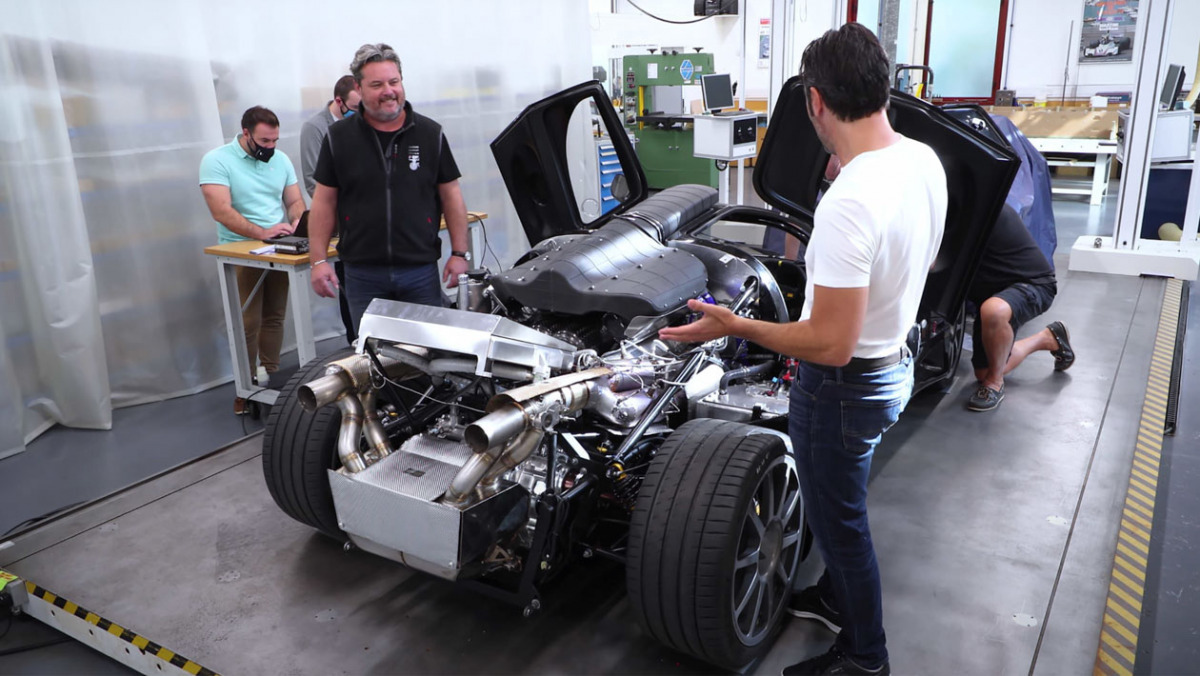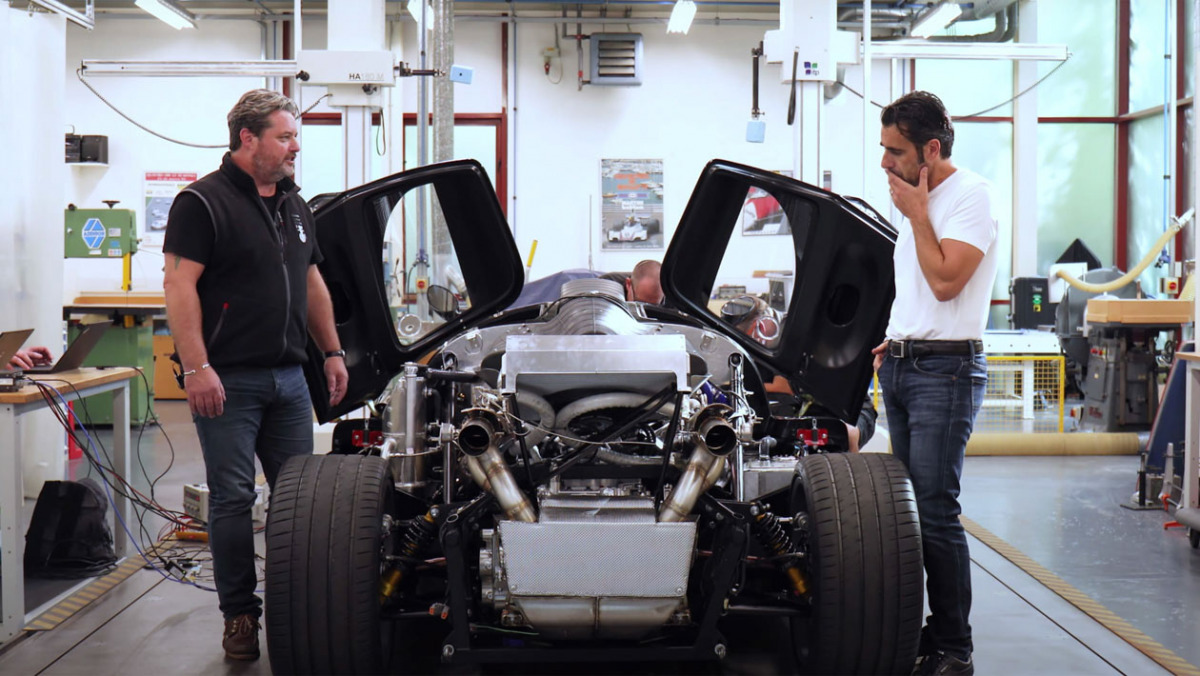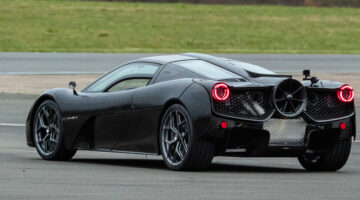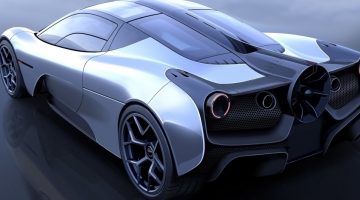T.50 development continues, GMA debuts one of its XP prototypes at Goodwood during its 78th Members’ Meeting
It hasn’t been long since we first saw (and heard) the T.50’s powertrain mule run up to its 12,100rpm redline, but Gordon Murray Automotive has now shown off a couple of its calibration prototypes in public, wowing crowds at Goodwood’s 78th Members’ Meeting. Driven by four-time Indy Car champion and former evo columnist Dario Franchitti, he took to the wheel of one, XP5 specifically, on track giving both spectators and some customers their first look of the exciting new hypercar in action.
As part of the T.50’s comprehensive development schedule, multiple XP cars are now up and running, with XP5 visually up to production-spec. Its powertrain isn’t far off either, with Franchitti revving well past the 6000rpm limiter in place earlier this month. Cosworth and GMA worked together to create its bespoke V12 power unit, with target performance figures of 664bhp at 11,500rpm and 345lb ft of torque arriving at 9,000rpm…
> Aston Martin Valkyrie makes dynamic debut at Goodwood Festival of Speed
Three body-on prototypes were shown in a development update earlier this month, including two cars with early stage components, XP1 and XP3, with XP4, the first B sample prototype, at a more advanced stage of development. Though not present in the powertrain mule, elements such as the digital wing mirror displays are now in place, with the final interior layout beginning to take shape. Testing is also ongoing with Michelin to develop a bespoke compound for the Pilot Sport 4 S tyre that’s being developed specifically for T.50.
The reveal of XP2 in March marked the first time that a T.50’s carbon chassis, body and Cosworth-built V12 engine had been brought together. As one of the most anticipated supercars of the modern era, the T.50 has a lot to live up to when it eventually reaches customers in 2022.
The GMA T.50
The combination of almost limitless creative freedom and Murray’s technical brilliance is a potent one, and with government regulation closing in on high-speed performance cars such as this, it could well be the last of its kind – the last analogue supercar.
The T.50 itself is a totally bespoke, money-no-object machine designed to appeal to the driver above all; no compromise, no platform sharing, no turbocharging, no automatic gearbox.
It’s underpinned by a carbonfibre chassis, has a central-seat layout, is powered by a naturally aspirated V12 engine, and transmits its power to the road via the rear wheels only, but it mixes these conspicuously simple ingredients with technological advancements gathered in the preceding 28 years to create Murray’s present-day interpretation of the ‘perfect driver’s car’. It could well be the best driver’s car ever. This is why.
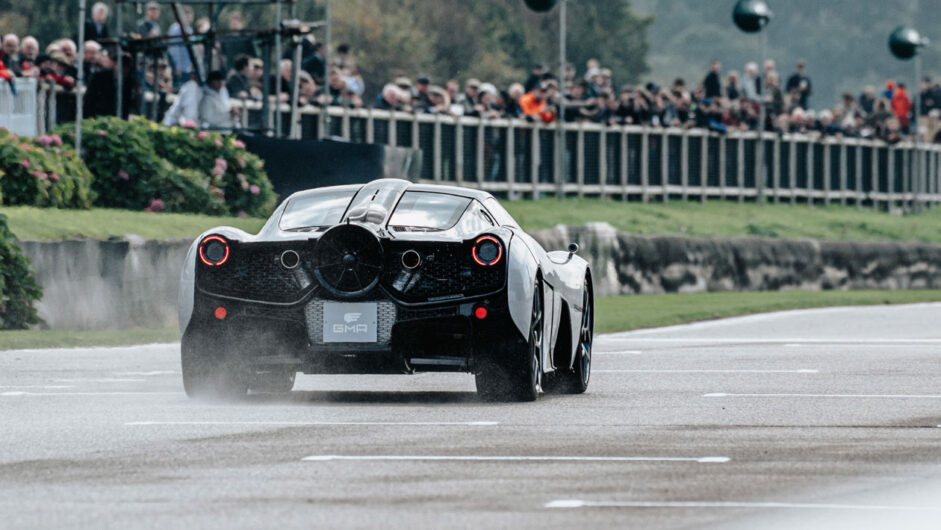
Chassis and lightweighting
The T.50’s carbonfibre monocoque chassis and body panels collectively weigh less than 150kg – an astonishingly low figure considering the safety regulations that must be adhered to in 2020. The cabin is laid out in a three-seater configuration, with each of the three seats also constructed from carbon. The driver’s seat weighs in at a scant 7kg, with each of the passenger seats even less at 3kg.
While carbonfibre was also used on the McLaren F1, Murray admits that it was an early experimental application of the material in a road car, based on his experience in Formula 1. The T.50 benefits from 30 years’ worth of development in carbonfibre, enabling its chassis to be 20-30kg lighter than the F1’s, yet twice as stiff and more commodious inside.
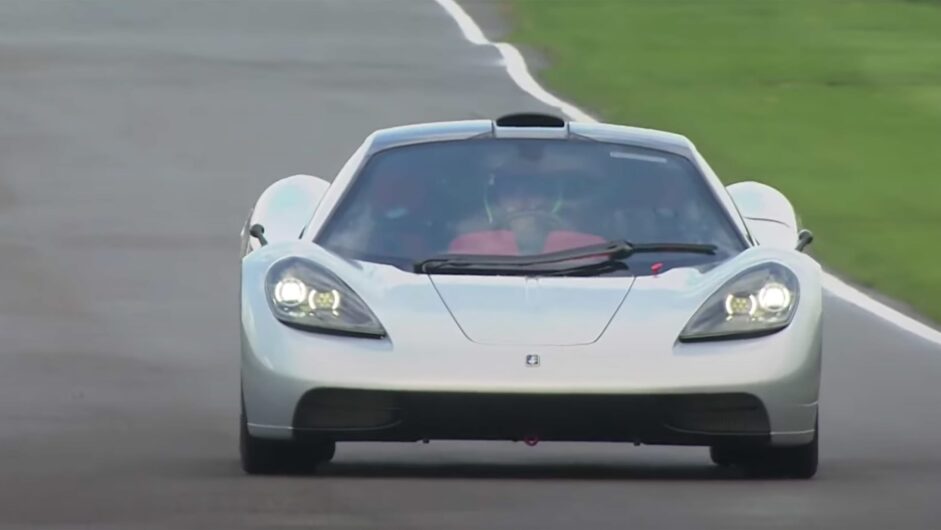
Every component has been targeted in the name of saving weight. The pedal box, for example, comes in 300 grams lighter than the F1’s, while the super-thin windscreen is 28 per cent lighter than typical automotive glass applications.
Dimensionally the T.50 has an incredibly compact footprint: it’s shorter and lower than a Porsche Cayman, and only 40mm wider despite its V12 engine, complex aero and three-seat cabin. The result of these modest dimensions and the accompanying lightweighting is a quite astonishing kerb weight figure of just 987kg, fluids included.
Powertrain details
The T.50’s V12 engine is completely bespoke, and has been designed between Murray and Cosworth to a very specific set of goals in construction, capability and design. The 3994cc motor features a 65-degree cylinder-bank angle, with an 81.5mm bore and 63.8mm stroke. It is naturally aspirated, runs at a 14:1 compression ratio, and has been designed for ultimate response as much as its power figure.
Peak power of 654bhp arrives at 11,500rpm, with the 345lb ft torque peak at 9000rpm. The V12 has a power density of 164bhp per litre, meaning it outperforms the 154bhp per litre of the Aston Martin Valkyrie’s 1000bhp, 6.5-litre engine – another naturally aspirated V12 designed and constructed by Cosworth, although GMA insists not a single component is shared between the two.
The maximum engine speed is 12,100rpm – a record for a production car. But even more astonishing is its rev-gain rate, the V12 capable of rising a stunning 28,500rpm per second. This is nearly three times faster than the BMW S70/2 V12 in the McLaren F1, and means the T.50’s engine is capable of hitting its rev limiter from idle in just 0.3sec. To achieve this, the internal moving parts have been shorn of as much weight as possible: the steel crank is just 13kg, and the connecting rods and valves are titanium, all to reduce rotational mass.
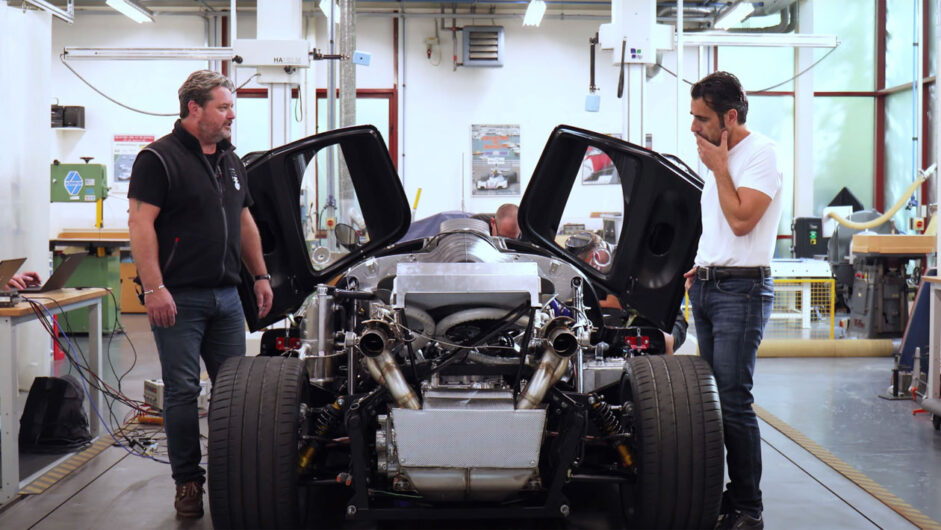
This contributes towards the V12’s incredibly low overall weight figure of 178kg – a record for a V12 road car engine, and 28kg less than the aforementioned Valkyrie V12. The crank is also only 80mm from the engine base, lowering all the engine’s internals to the benefit of weight distribution. Internal engine lubrication is by a dry sump system, naturally.
Almost obsessive measures have been taken in all factors of the powertrain’s ancillaries, too. There are no belts on the V12 – everything is gear-driven – while a 48V mild-hybrid system that employs an integrated starter motor and generator streamlines the electrical side of things. The V12’s ancillaries are situated out of sight, meaning only the headers, exhaust manifolds and intake plenum and trumpets are visible through the car’s glazed engine cover.
The V12’s intake is fed via a roof-mounted ram-air scoop that borrows Direct Path Induction Sound tech first seen on the McLaren F1. The system essentially amplifies the intake sound from the roof scoop into the cabin, but runs on the basis of throttle position rather than engine speed, keeping the relative noise down when the driver lifts, while ensuring a more intense sound under big throttle applications at lower revs.
The six-speed manual gearbox is another bespoke commission, this time designed and built by Xtrac. It weights just 80.5kg, which – you’ve guessed it – is another road-car record. The shift feel is being painstakingly perfected by Murray himself with a short-throw movement on the compact gearlever that sprouts from the right-hand side of the central driver’s seat.
| Specs | GMA T.50 | Aston Martin Valkyrie |
| Engine size | 3994cc | 6499.01225944cc |
| Construction | 65-degree V12 | 65-degree V12 |
| Max power | 654bhp @ 11,500rpm | 1000bhp @ 7000rpm |
| Max torque | 345lb ft @ 9000rpm | 546lb ft @ 7000rpm |
| Peak RPM | 12,100 | 11,100 |
| BHP/litre | 164bhp/litre | 154bhp/litre |
| Engine weight | 178kg | 206kg |
Airflow management
The GMA T.50’s unique aerodynamic package includes developments of features from Gordon Murray’s Formula 1 cars as well as modern-day F1 and road cars.
Dominating the package is a rear-mounted 400mm fan, which can accelerate the air passing under the car and out of the rear diffuser to increase downforce. The fan works in conjunction with a selection of movable aero devices in the T.50’s underfloor, inside the rear diffuser and at the trailing edge of the car’s rear end. The underfloor ducting, together with the fan’s unique design, does away with the need for the ‘skirt’ found on the Murray-designed Brabham BT46B ‘fan car’ of the late 1970s. The fan also doubles as a cooling aid for the mid-mounted V12 when required.
The T.50 has a total of six different aero modes, two of which are automatically engaged without driver intervention, and the other four being selectable. Auto Mode is the default, and enables the system to respond variably to driver inputs, while a Braking Mode then activates under heavy braking, lifting the aerofoils and operating the fan at high speed, doubling downforce and therefore enhancing the tyres’ purchase on the road surface for the most effective braking performance.
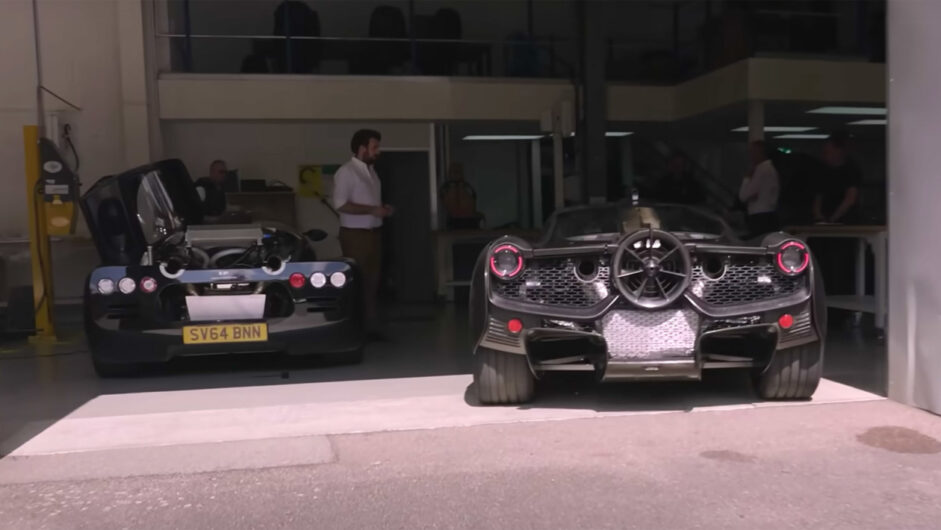
The four further modes include High Downforce Mode for fast road or track driving. This activates the fan and aerofoils to improve traction and high-speed cornering grip by raising downforce by 30 per cent over the default mode. Streamline Mode, meanwhile, reduces drag over the default mode by ten per cent for high- and low-speed cruising, and closes all the underbody ducts and activates the fan at high speeds to extend the trailing wake of air behind the car, in effect creating a virtual long-tail.
Vmax Mode shares this slipperiest of set-ups with Streamline Mode, but adds almost 50bhp of electrical power from the integrated starter-generator for up to three minutes, raising peak power to around the 700bhp mark.
To validate these modes, GMA partnered with the Racing Point Formula One team to utilise its rolling-road wind tunnel at Silverstone. The first quarter of 2020 also saw the opening of the Gordon Murray Automotive customer experience and service centre at Dunsfold Park in Surrey, alongside the company’s headquarters and manufacturing facility, which will commence building cars in January 2022.
Design and interior
As with so many other elements of the T.50, it’s impossible not to draw parallels between the new car and the McLaren F1. Their shared DNA is obvious in the design, with similar proportions underpinning an aesthetic that’s more complex and contemporary on the T.50 than its ’90s predecessor.
The roof-mounted ram intake means that large-scale air intakes are not required in the body sides, affording them a simplicity not seen on rivals such as the Valkyrie or contemporary McLarens. The canopy-like cabin has a similarly ‘glassy’ feel to the F1’s and can be enhanced with optional glazed sections in the tops of the butterfly doors. The side windows are once again sectioned, but there are no rear windows this time, rearward visibility being handled solely by cameras, the images from which are displayed on screens either side of the cockpit. For this reason, there are no door mirrors either.
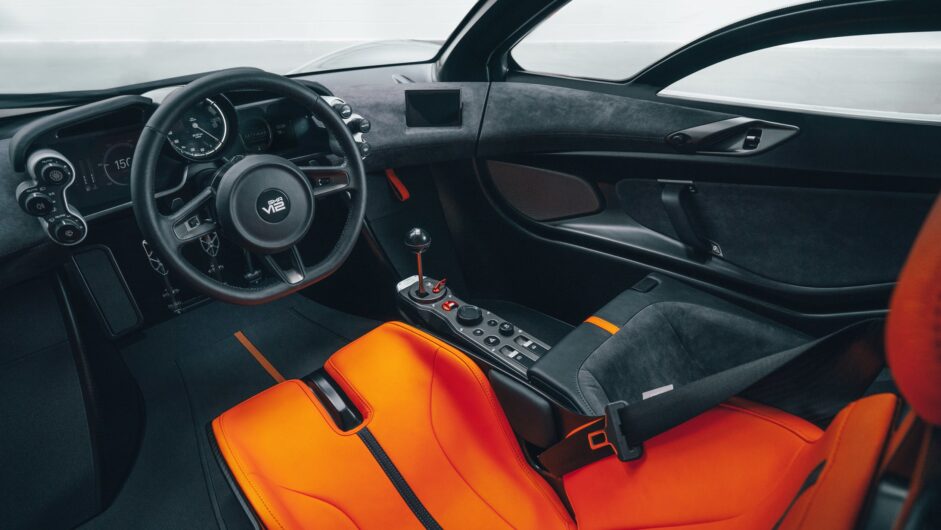
Any complexity to the T.50’s design is almost exclusively saved for the rear-end, which needed to integrate the fan, underbody diffuser, cooling, lighting and exhaust outlets in a relatively compact space. While the F1 shared its rear lights with an Iveco truck, the T.50’s LED units are bespoke and, as you’d expect, lightweight.
The car’s central-seat layout has largely driven the interior architecture, but the interfaces and controls are pure Murray. The steering wheel is free of cluttering controls, while touchscreens are notable by their absence; instead the driver interacts with the car via six milled control knobs flanking the instrument cluster. The centrally positioned rev counter is analogue (seems Lexus’s claim that the LFA required a digital rev counter to keep pace with its fast-revving V10 may have been a rare case of Japanese adornment), while either side are digital displays splitting driver info and infotainment/navigation.
The manual transmission lever sprouts to the driver’s right on a cantilevered carbon and aluminium structure that also exposes the lever’s movement underneath.
The money
A total of 100 T.50s will be built, commencing in 2022 and priced from $3.2m before local taxes or charges. Given the McLaren F1’s reputation, it’s not surprising to hear that the majority of the build run has already been allocated, with a strong reception from Japan and the US.
This article originally appeared at evo.co.uk
Copyright © evo UK, Autovia Publishing

